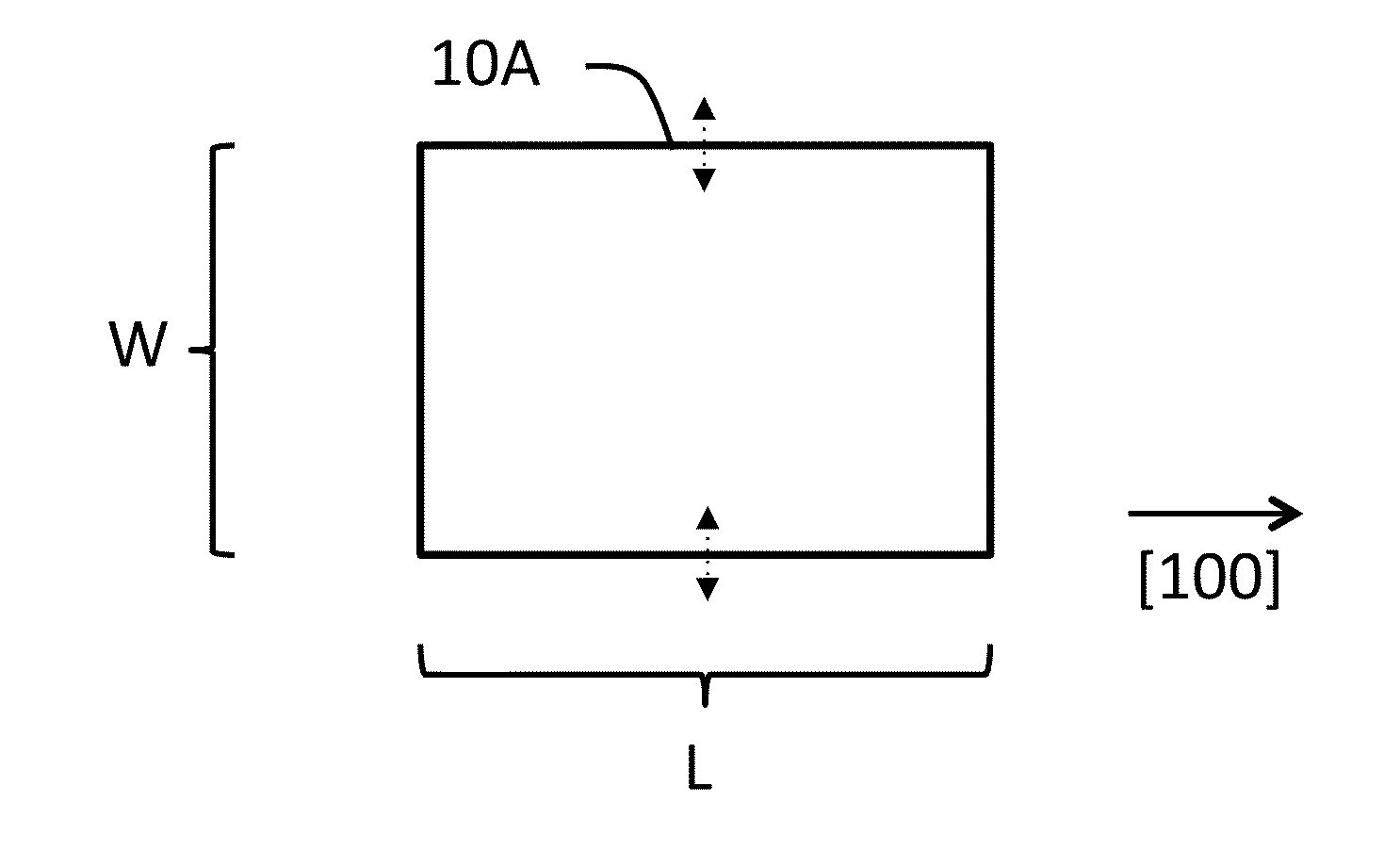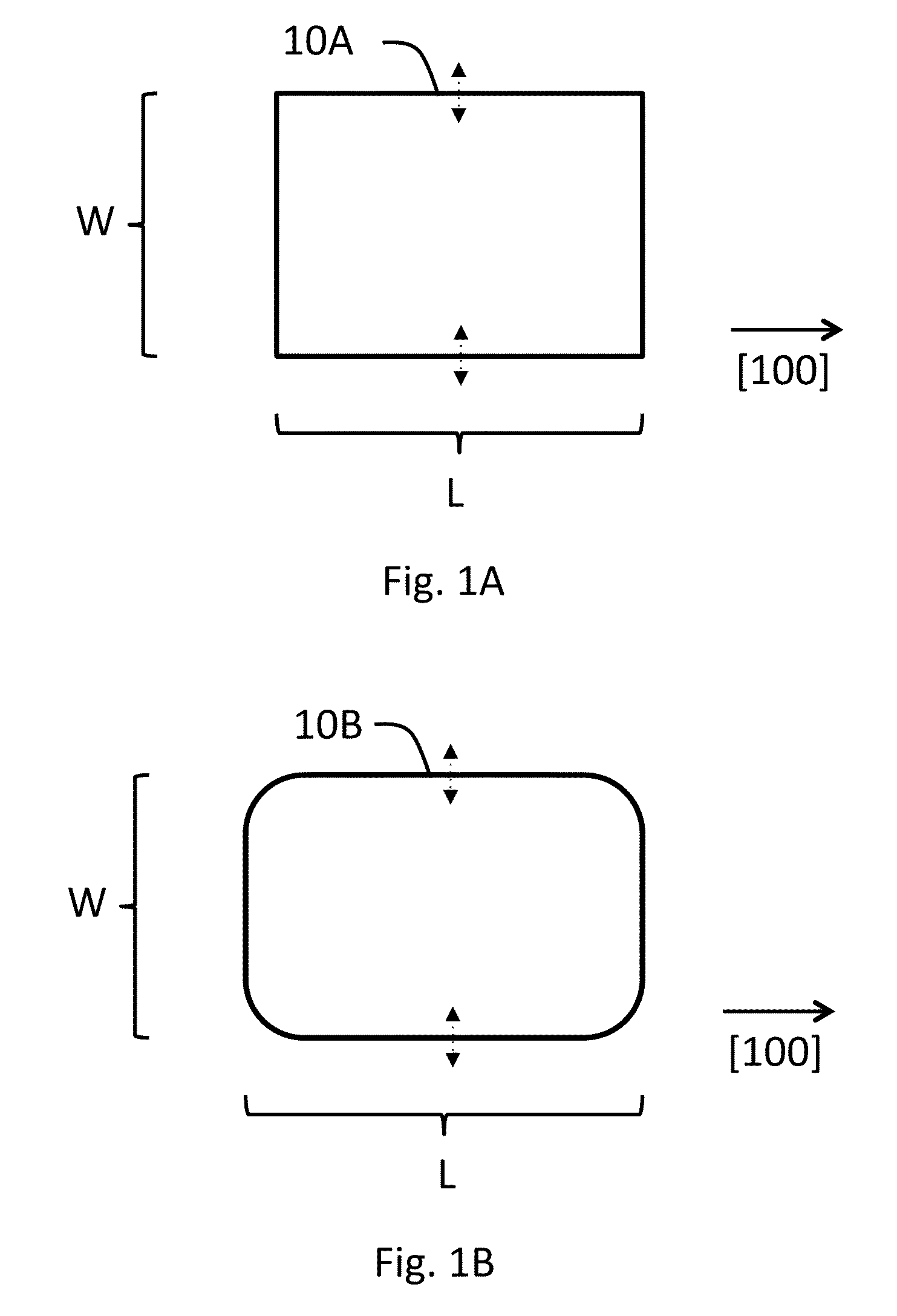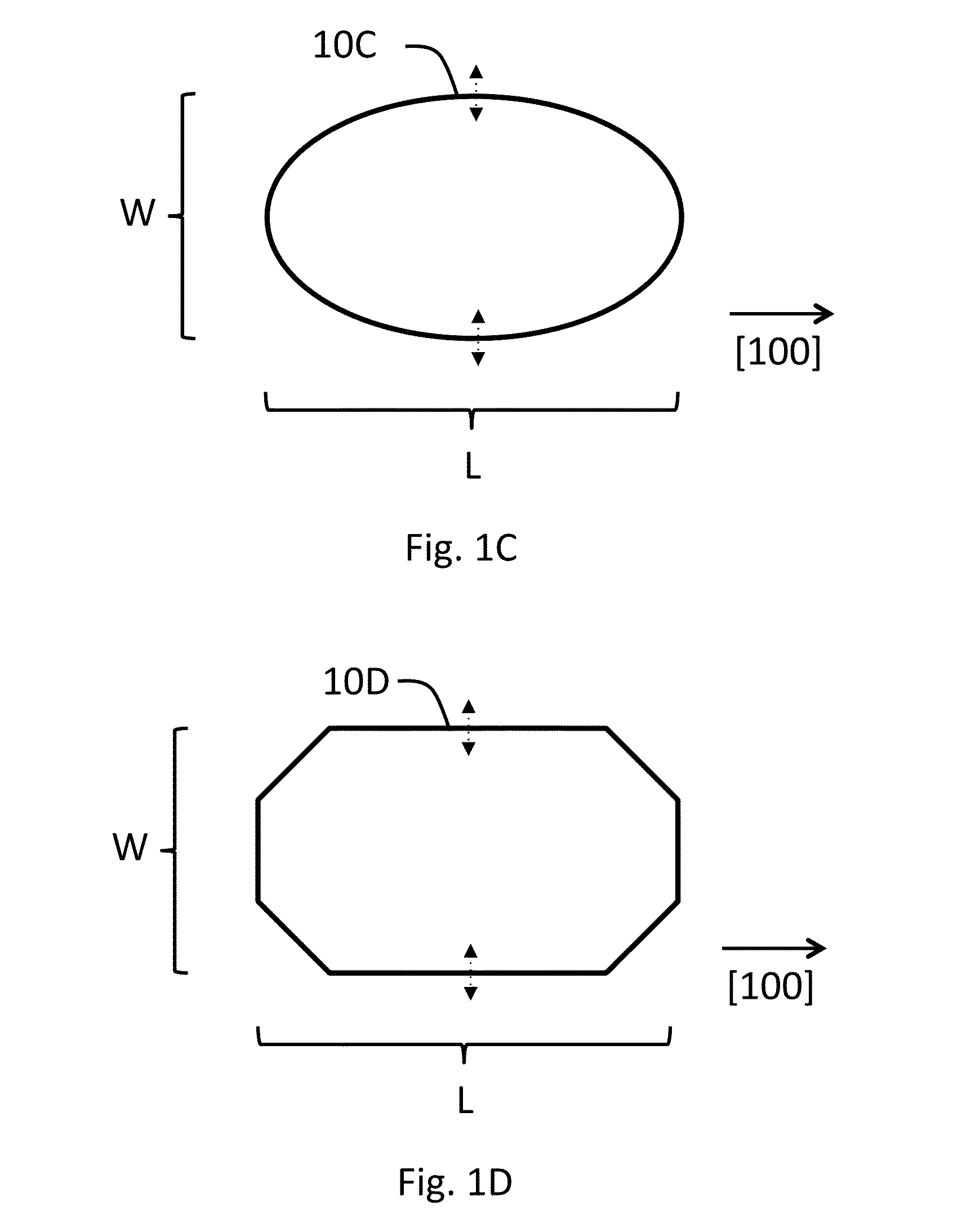Temperature compensated plate resonator
- Summary
- Abstract
- Description
- Claims
- Application Information
AI Technical Summary
Benefits of technology
Problems solved by technology
Method used
Image
Examples
Embodiment Construction
[0052]FIG. 1 shows a rectangular resonator plate 10A having a length L and width W. The longer sides of the plate 10A are oriented along the [100] direction of the silicon crystal. Main deformation direction of the resonator plate 10A in a WE resonance mode is along the width axis of the plate and is illustrated with dashed arrows. Preferably, the deformation is symmetrical with respect to the longitudinal axis of the plate 10A.
[0053]FIG. 1B shows resonator plate 10B also having a generally rectangular shape but having rounded corners. Apart from this, the resonator is similar to and also operates similarly to that of FIG. 1A.
[0054]FIG. 1C shows an elliptical resonator plate 10C as another embodiment. The longer main axis of the plate has a length of L and the shorter a length of W. Optimal values and ratio of L and W may differ from those of FIGS. 1A and 1B. The elliptical plate can also resonate in a width-extensional mode, that is, along the direction of the shorter main axis.
[00...
PUM
 Login to view more
Login to view more Abstract
Description
Claims
Application Information
 Login to view more
Login to view more - R&D Engineer
- R&D Manager
- IP Professional
- Industry Leading Data Capabilities
- Powerful AI technology
- Patent DNA Extraction
Browse by: Latest US Patents, China's latest patents, Technical Efficacy Thesaurus, Application Domain, Technology Topic.
© 2024 PatSnap. All rights reserved.Legal|Privacy policy|Modern Slavery Act Transparency Statement|Sitemap



